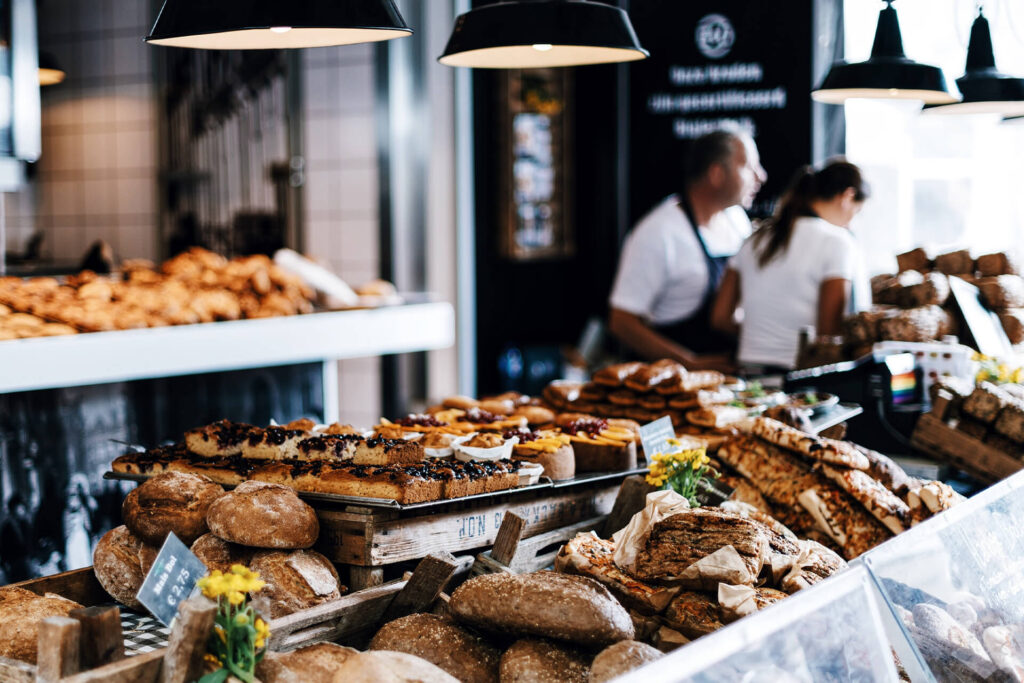
Since 2008, Joanie Spencer has covered the retail and wholesale sides of the baking industry.
Serving associations such as the American Society of Baking (ASB) and BEMA, Joanie is also in demand as an industry presenter on bakery operations and trends. She holds a bachelor’s degree in communication from Rockhurst University and a master’s degree in journalism from the University of Missouri.
When she’s not running or playing soccer, Joanie spends her time with her husband and 11-year-old son.
CHICAGO — The COVID-19 pandemic has deeply impacted the foodservice industry, as well as the bakeries who supply them.
In November 2020, the National Restaurant Association conducted a survey of 6,000 restaurant operators and 250 supply chain businesses. It revealed that 17% of all eating and drinking establishments had temporarily or permanently closed in the fourth quarter, and 87% of full-service establishments reported a 36% drop in sales revenue.
Consumers are missing the overall experience of eating at restaurants. As things slowly creep back toward a semblance of normal, commercial bakers can expect incremental increases from their customers when consumers try to fulfill that “pent up” demand, as described by Hudson Riehle, senior VP of research for the National Restaurant Association.
During the pandemic, the National Restaurant Association reported that consumer pent-up demand reached 80% of all American adults. Although it’s going to take time, this hints toward a bounce back.
“The ability to understand and integrate not only traditional but also innovative new products in the years ahead is an important component of shifting food spending back toward the away-from-home solutions.”
This spells opportunity for commercial baking companies.
Experience is a big driver for consumers to eat out, but that need can’t be fulfilled during a lockdown or onsite at a quarter capacity. As a comfort food, baked goods are a hallmark of the eating encounter, and that’s not only satisfying for a carry-out indulgence during the pandemic, but it’s also a chance to enhance that onsite experience when the opportunity returns.
That could come in the form of a decadent dessert, a cookie add-on to a QSR meal or even an incredible sandwich when the joy of cooking at home eventually loses its luster. There’s a long road ahead for foodservice, but many companies are leveraging technology advances to create change that will last in the long-term, and even create more opportunity for operators and their bakery suppliers.
Here’s how two major players did exactly that.
Five Guys
Five Guys, whose model is built around on-premise dining, learned to make operational adjustments for convenient curbside and carryout and has conducted extensive tests for quality control to ensure a comparable eating experience at home vs. onsite. Before COVID-19, Five Guys ran that onsite operation with assembly-line efficiency.
“When the pandemic hit, our orders were coming in from the phone, the web and delivery agents,” Kestenblatt said. “That drastically increased the complexity of our operation, but we very quickly shifted into that mode and did a great job with it.
Technology tools such as geofencing for curbside and carryout service will most likely have staying power for this global burger operator.
Riehle also predicted that the current emphasis on off-premise dining will not likely fade post-pandemic. In fact, he noted that pre-COVID, nearly one in 20 orders was done digitally, and today it looks more like one in five.
“That’s a huge jump,” Riehle said. “From the baking industry’s perspective — particularly over the upcoming decade with more rapid integration of technology — the ability to use that environment to promote and incent consumers to use baked goods is new territory.”
Specifically, he suggested yield management is a new horizon that suppliers of baked goods should tap into for foodservice.
This variable pricing strategy, often used for airline tickets and hotel reservations, is making its way into foodservice menu pricing by time of day or day of the week. And now, it’s evolving to generate demand through product promotion as well.
“This creates the ability to used baked goods as a nudge for consumers to use online ordering,” Riehle said. He also suggested that items such as muffins, cookies and other desserts make easy add-on incentives through yield management.
H&S Bakery
As a supplier of bread products to the foodservice industry, Baltimore-based H&S Bakery made several adjustments to accommodate customers who were still in business but unable to allow suppliers into their establishments.
“The nursing homes and hospitals can’t see us,” said Shawn Paterakis, key accounts manager, H&S Bakery and Distribution. “We used to just walk right in, but we can’t do that anymore. So, we have to maintain those relationships and show our customers we’re still here for them and just a phone call away.”
H&S did a major overhaul to its proprietary web-based ordering system and offered flexibility on order minimums to reasonably meet foodservice customers where their biggest needs are.
The company also launched a new website that is equipped with a marketing automation feature to identify targeted leads based on data from catalog downloads. This enables sales team members to connect directly with current and prospective customers. “It’s the first time we’ve had the power to do that, and it’s been very helpful,” Paterakis said.
On the road to recovery, it feels like “one step forward, two steps back.” Although the journey is slow, the return will come.
“This current period of the pandemic and its lingering after-effects on consumer behavior is quite substantial,” Riehle advised. “But looking toward the future of the industry, it certainly remains optimistic.”